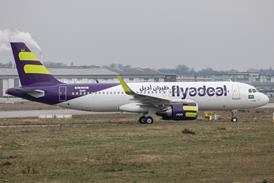L-3 Communications has unveiled the optionally manned Mobius aircraft, launching the firm into the hotly contested market for medium-altitude, long-endurance unmanned air vehicles and fulfilling a corporate goal to expand as a systems integrator.
Based on the high-performance Berkut kit aircraft, Mobius flew publicly yesterday during the AUVSI air demonstration at Webster Field, Maryland. Its aerial routine demonstrated the 12.5g-aircraft's ability to bank at 45° angles and dash at up to 215kt.
|
|
|---|
The L-3 Communications Mobius unmanned air vehicle flew at the AUVSI Unmanned Systems North America 2009 demo at Webster Field, Maryland on 10 August 2009 |
Mobius is aimed at filling a gap in the market for a MALE capability at prices more comparable to more tactical, long-endurance UAVs, Gautier says. Powered by a Lycoming issue and a three-bladed propeller, Mobius is unique among purely unmanned or even optionally manned UAVs in the MALE class, Gautier says.
L-3 has completed building two flying Mobius aircraft and a third is in the final stages of production, he adds. The aircraft has evolved from a first to a second generation configuration, and is advancing to be ready for low-rate initial production starting in 2010, he says.
One new innovation designed and patented for Mobius is a retractable elevator for the L-3 Wescam MX-15, allowing the sensor turret to retract into the fuselage, Gautier says. This elevator system can be applied to other aircraft as well.
Source: Flight Daily News
























